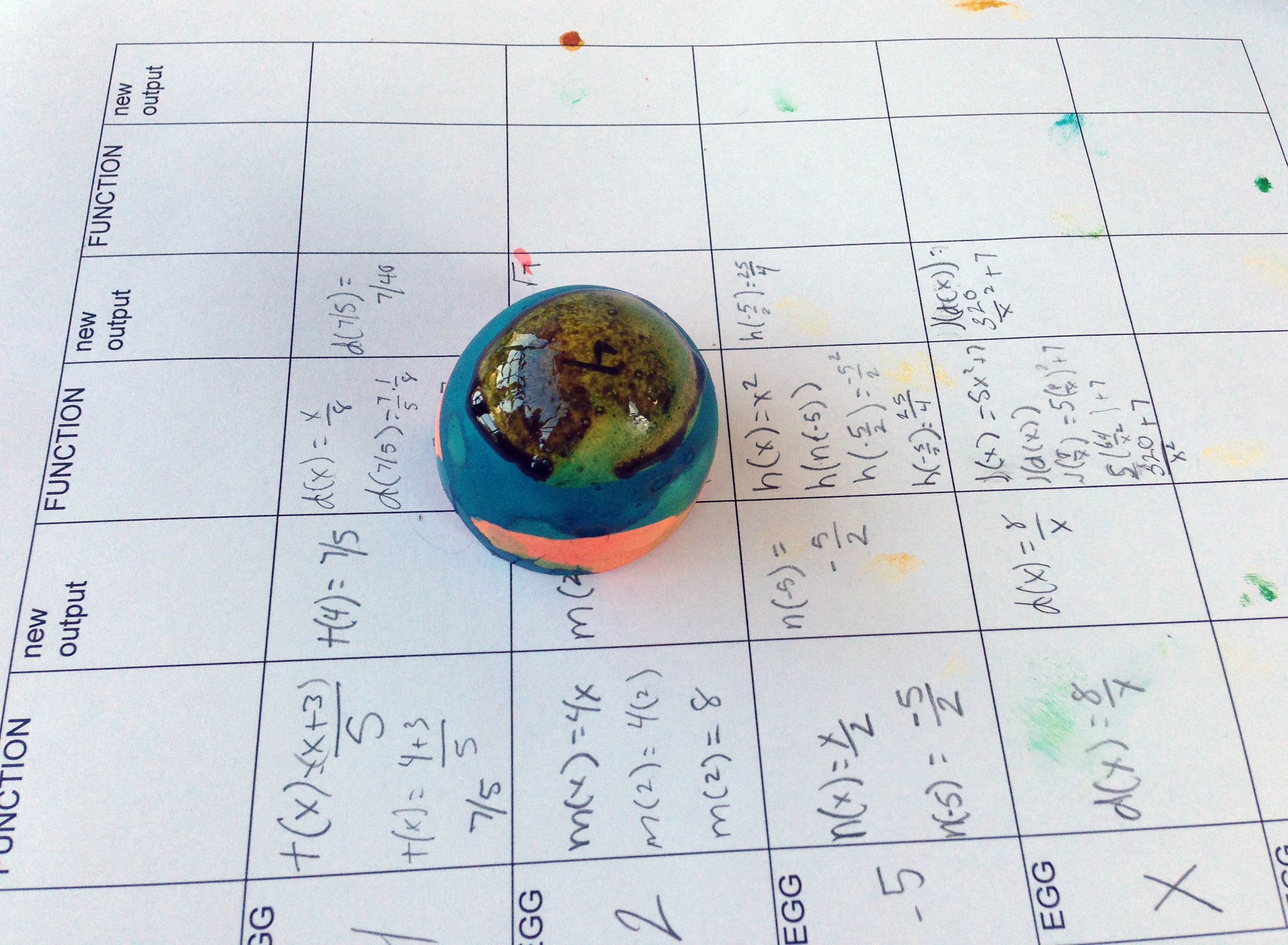Composing Functions
The advantage to working at a boarding school is the abundance of egg shells come Sunday morning. This activity provides some practice with composing functions, and a visual way of conceptualizing the process.
MATERIALS:
egg shells, dye, shallow saucers, input-out fxn. chart
PROCEDURE:
- Students are each given 5 eggs, some labeled with constants and others with variables.
- Each color dye is labeled with a function.
- Begin by labeling each row in your egg grid with your egg input.
- Dip your egg fully into one color. You are “inputting” your egg into that function. As you wait for your eggs to dry, find the output for each of your eggs.
EXAMPLE:
Egg Input : 3
Red Fxn : f(x) = 2x – 5
Egg dipped in red dye:
F(3) = 2(3) – 5 = 1
If your input was a plain egg, your output is this colored egg. Now we will use this output as the NEW input. We will input this egg into a NEW function. We are composing functions.
For example, if f(x) = 2x-5 and by input was 3, my output was 1. Now I will input my output (1) into a NEW function.
G(x) = 5x
F(x) 2x-5
If f(3) =1, then g(f(3)) = g(1) = 5
Continue dipping eggs until you have completed the Egg Dip Handout.








